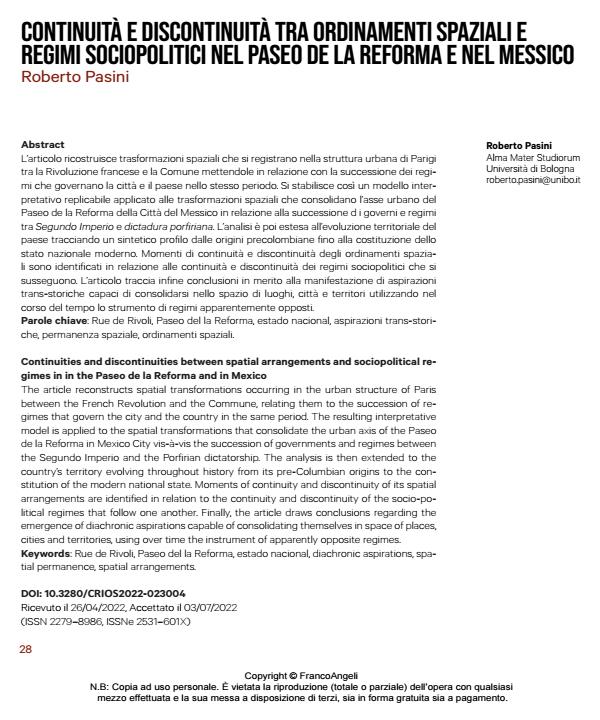Continuities and discontinuities between spatial arrangements and sociopolitical regimes in in the Paseo de la Reforma and in Mexico
Journal title CRIOS
Author/s Roberto Pasini
Publishing Year 2022 Issue 2022/23
Language Italian Pages 14 P. 28-41 File size 526 KB
DOI 10.3280/CRIOS2022-023004
DOI is like a bar code for intellectual property: to have more infomation
click here
Below, you can see the article first page
If you want to buy this article in PDF format, you can do it, following the instructions to buy download credits

FrancoAngeli is member of Publishers International Linking Association, Inc (PILA), a not-for-profit association which run the CrossRef service enabling links to and from online scholarly content.
The article reconstructs spatial transformations occurring in the urban structure of Paris between the French Revolution and the Commune, relating them to the succession of re- gimes that govern the city and the country in the same period. The resulting interpretative model is applied to the spatial transformations that consolidate the urban axis of the Paseo de la Reforma in Mexico City vis-à-vis the succession of governments and regimes between the Segundo Imperio and the Porfirian dictatorship. The analysis is then extended to the country’s territory evolving throughout history from its pre-Columbian origins to the con- stitution of the modern national state. Moments of continuity and discontinuity of its spatial arrangements are identified in relation to the continuity and discontinuity of the socio-political regimes that follow one another. Finally, the article draws conclusions regarding the emergence of diachronic aspirations capable of consolidating themselves in space of places, cities and territories, using over time the instrument of apparently opposite regimes.
Keywords: Rue de Rivoli, Paseo del la Reforma, estado nacional, diachronic aspirations, spatial permanence, spatial arrangements.
Roberto Pasini, Continuità e discontinuità tra ordinamenti spaziali e regimi sociopolitici nel Paseo de la Reforma e nel Messico in "CRIOS" 23/2022, pp 28-41, DOI: 10.3280/CRIOS2022-023004